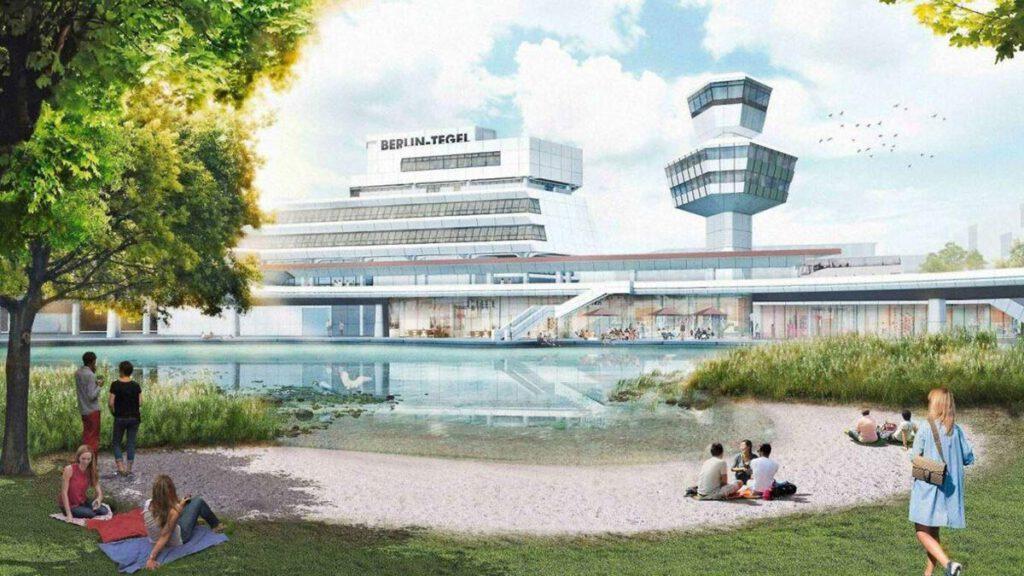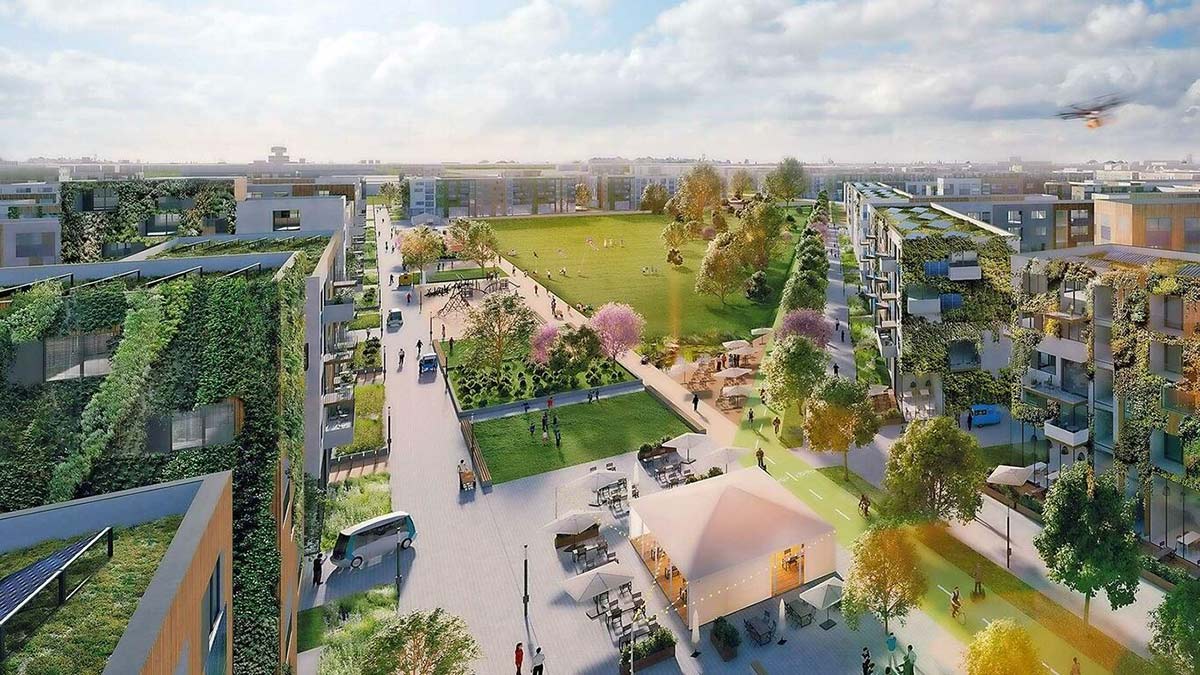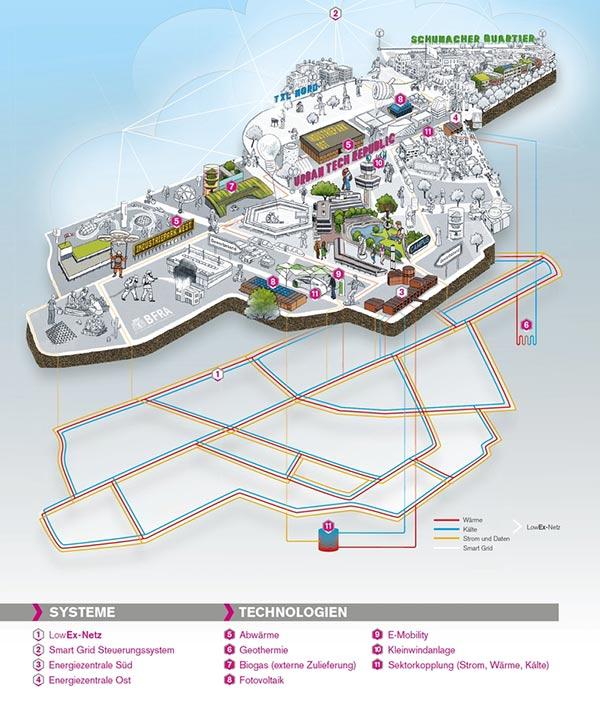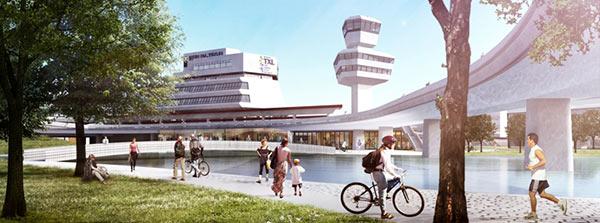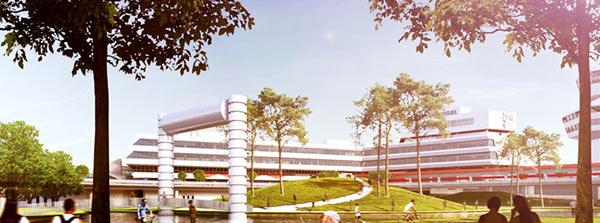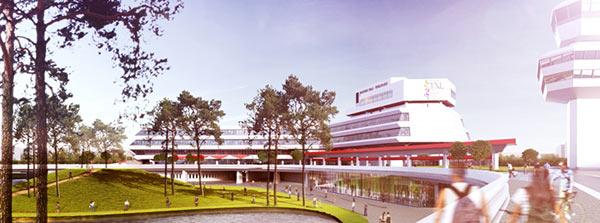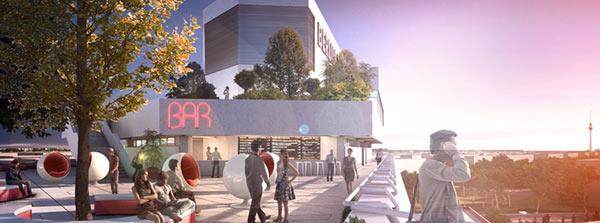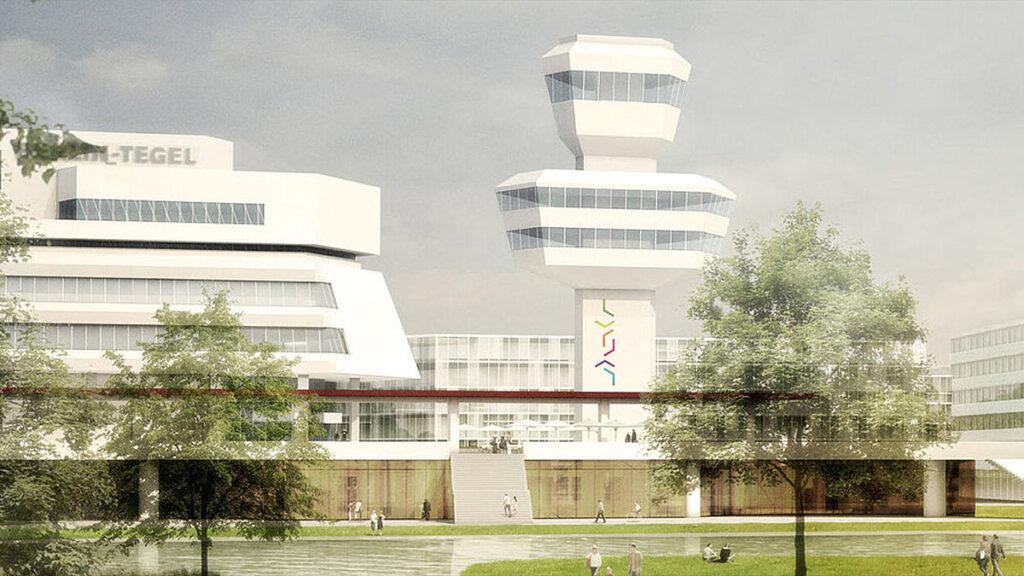Berlin Tegel to become a smart city
Where aircraft used to take off and land, a new project aims to work on how to save the world. Berlin Tegel is due to be transformed into a research park for climate protection strategies and a smart model residential district for the future.
“You were small but you did great things.” “You were our gateway to the world.” These were the messages with which the citizens of Berlin bade farewell to their airport Berlin Tegel on 8 November, after it had served them for 72 years. Some people made a special trip there to melancholically witness the final departure to Paris. Photos were taken pictures of the tower illuminated in red for the occasion. Social media were full of grand emotions for the airport that had become too small for its city. Postings were accompanied by the ubiquitous hashtag “Thanks TXL” that was even displayed on the digital screens of the shuttle bus. For many people, the retro-design airport had turned into a nostalgic place where time seemed to stand still. Now, however, the signs are pointing to innovation. The grounds have been earmarked for the project Berlin TXL – a research centre for sustainable technologies and a residential district presented as a model for the city of tomorrow.
Ostentatious symbol of the future
The Urban Tech Republic is the name of this new industrial park with its globally unique focus. Large and small enterprises will work together with students to explore how to save the world. The growing major cities of the 21st century will need innovative models and approaches to remain successful, explains the scientific think tank for the project commissioned by the state of Berlin.
“In the next 40 years, we will see more cities built than in the last 4,000 years. A total of 70% of the world’s population will then live on 3% of the earth’s surface. Organizing this is a real challenge,” it says in the brochure published by development company Tegel Projekt GmbH. This will require new solutions for mobility, energy and resources as well as intelligent systems to make these solutions possible. Urban technologies is the broader term for all the research areas to be funded on this site.
In the next 40 years, we will see more cities built than in the last 4,000 years. A total of 70% of the world’s population will then live on 3% of the earth’s surface.
Tegel Projekt GmbH, urban developer
Insights gained at the research park will be applied right next door. The Schumacher Quartier, also planned for the Berlin Tegel grounds, is scheduled to become a smart model residential district of the future. More than 10,000 people will live here in apartments built with resource-conserving methods and supplied with climate-neutral energy. The residents will be people who embrace future technologies and will try out new mobility concepts, test the Internet of Things in everyday life and spend their leisure time in the biodiverse landscape area nearby. Their enviably low CO2 balance could serve as an ostentatious symbol of the future.
Participatory urban development
Students of the Beuth University of Applied Sciences will move into the honeycombed terminal which many Berlin citizens knew inside out. In total, the Campus TXL will offer places for up to 5,000 students. Roughly 1,000 companies at the innovation park will employ nearly 20,000 people and over 9,000 apartments will be created in the residential district.
The dimensions of this new, centrally located urban development area are vast. Covering five square kilometres, it is equivalent to about 5% of the city of Paris.
This progressive megaproject has been developed in a participatory planning process. Right from the start, the public has been involved in the discussions about the future use of the airport grounds. Constructive contributions were welcomed in site conferences.
A workshop process comprising six international teams of architects, urban and landscape planners resulted in the idea for an innovation park. Proposals obtained in this setting were subsequently developed together with experts, administration and representatives of the public.
From consumer to prosumer
Until now the venture at Berlin Tegel has only existed on paper and yet the campus at the centre of the innovation park has held a platinum preliminary certificate by the German Sustainable Building Council since 2016. An innovation cluster intends to bring timber technology up to industrial standards. This involves reducing its costs and finally superseding conventional construction methods.
The “LowExergy” network, as the basis of the energy concept for the smart city, is planned with globally unique dimensions. It will use a digital market place for thermal energy, supplying rooms with heat or cold as required. This technology is turning passive energy consumers into a concept of the past. In tomorrow’s city they will become prosumers who produce energy as well as consuming it.
The entire project will be developed in four construction phases, with 2040 scheduled as the overall completion date.
This promising venture will likely make it easier for Berlin’s citizens to bid a tearful farewell to their beloved Tegel. And those who still have a hankering for the past can obtain the original airport inventory from the 1970s, for example at Cramer Design Loft in Charlottenburg. A row of seats from the terminal in garish yellow-orange will lend any home the requisite airport flair.
Text: Gertraud Gerst
Translation: Rosemary Bridger-Lippe
Images: Tegel Projekt GmbH
